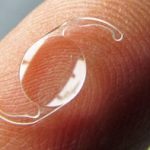GLAUCOMA SURGERY
What is glaucoma?
Glaucoma is a group of eye diseases that can cause vision loss and blindness by damaging a nerve in the back of your eye called the optic nerve. The symptoms can start so slowly that you may not notice them. The only way to find out if you have glaucoma is to get a comprehensive dilated eye exam. There’s no cure for glaucoma, but early treatment can often stop the damage and protect your vision.
Types of Glaucoma
There are different types of glaucoma, which are as follows:
Open-angle glaucoma: This is the most common type of glaucoma, in which the drainage angle between the iris and the cornea remains open, but the trabecular meshwork is partially blocked. This gradually increases eye pressure, which damages the optic nerve. Since this process happens very slowly, you may lose vision before being aware of the problem.
Angle-closure glaucoma: Also called closed-angle glaucoma, this form of glaucoma happens when the iris budges and, as a result, the angle formed by the iris and the cornea is narrowed or blocked, leading to accumulation of fluid (aqueous humor) in the anterior chamber, hence an increased intraocular pressure. Angle-closure glaucoma can be sudden (acute angle-closure glaucoma) or gradual (chronic angle-closure glaucoma), the former being a medical emergency. Drainage angles are congenitally narrow in some people, putting them at a greater risk of closed-angle glaucoma.
Normal-tension glaucoma: Although the eye pressure is normal, the optic nerve gets damaged in normal-tension glaucoma and no one exactly knows why this happens. It may be that your optic nerves receive insufficient blood or that you have sensitive nerves. The insufficient blood supply can be caused by atherosclerosis (buildup of fatty deposits in the arteries) or any other condition that reduced circulation.
Pigmentary glaucoma: This form of glaucoma occurs when pigment granules from the iris accumulate in the drainage channels, blocking or slowing fluid draining from the eye. Some activities, such as jogging, may stir up the iris’s pigment granules and deposit them on the trabecular meshwork, which leads to intermittent rises in intraocular pressure.
Glaucoma in children: Glaucoma can happen in infants and children, either being present from birth or developed in the first few years. The optic nerve damage occurring in children can be caused by drainage blockages or other underlying medical conditions.
Glaucoma Treatment
If detected in its early stages, glaucoma can be treated nun-surgically. There are two on-surgical glaucoma treatment: eye drops and pills. Glaucoma eye drops reduce pressure inside the eye, thus eliminating the cause of the condition and improving the symptoms. Eye drop might interfere with other medications you take, so it’s very important that you tell your doctor what medication you are currently taking. In some patients, glaucoma eye drops causes redness, stinging or burning. Glaucoma pills stimulated proper fluid drainage from the eye, reducing pressure on the optic nerve. There are different kinds of oral medications for glaucoma treatment, so if a person doesn’t respond well to one, a different medication or a different dosage can be prescribed.
People must stick to their glaucoma medication treatment regimen even if they don’t have any symptom because early-stage glaucoma usually has little or no symptom. Therefore, keep in mind that medications are preventive in nature and the vision lost due to glaucoma cannot be recovered through medications. Medications do not always yield the desired results, so surgery will be needed to stop glaucoma from deteriorating.
Glaucoma Surgery: Options and Procedures
Trabeculectomy: The most conventional type of glaucoma surgery is trabeculectomy. It is an incisional surgery that removes some of the trabecular meshwork in the eye. During this process, a tiny piece of tissue from the conjunctive is removed using surgical devices, leaving a small hole through which the aqueous humor can drain out and be reabsorbed into the bloodstream.
Trabeculectomy is typically an outpatient procedure. Patients having this surgery should limit some activities, such as reading, driving, bending and heavy lifting, for 2-4 weeks.
About half of patients who have trabeculectomy will no longer need medications after surgery for a long time. Many of the remaining half who still need medication after surgery will have better control of their eye pressure.
Laser trabeculoplasty: Laser trabeculoplasty is a surgical glaucoma treatment usually recommended for patients with open-angle glaucoma who take eye drops to lower their IOP but the eye drops are causing significant side effects or simply aren’t effective enough
There are two types of laser trabeculoplasty: argon laser trabeculoplasty (ALT) and the newer technique called selective laser trabeculoplasty (SLT). ALT successfully lowers eye pressure in 75% of cases. SLT uses a low-level laser to create tiny holes in the trabecular meshwork, leaving portions of the meshwork intact. That is why it is called ‘selective’. SLT is normally used when ALT doesn’t produce the desired result. Laser trabeculoplasty is an outpatient procedure. The eye specialist applies topical eye drops to numb your eye while you are sitting in a conventional exam chair. He/she uses a slit lamp to examine your eye and places a lens on your iris for better viewing, then plies the laser to create tiny holes on the meshwork for proper drainage of fluid.
Peripheral iridotomy or peripheral iridectomy: Laser peripheral iridotomy (LPI) is the preferred glaucoma treatment for patients with angle-closure glaucoma or those at risk of this form of the condition. Also a laser glaucoma surgery, peripheral iridotomy involves using a laser to make a small hole in the iris to allow the fluid to pass freely within the eye.
A very similar procedure is called peripheral iridectomy, which involves removing a part of the iris to allow drainage, rather that creating holes.
Cyclophotocoagulation: Another glaucoma treatment option is cyclophotocoagulation (CPC) or endoscopic cyclophotocoagulation (ECP). In this outpatient procedure, a laser is used to destroy a portion of the ciliary body that produces aqueous humor to reduce the production of this fluid and thus reduce the intraocular pressure. There are other glaucoma treatments options, such as tube shunts and implants (Ex-Press glaucoma filtration device, iStent trabecular micro-bypass, Ahmed glaucoma valve, CyPass micro-stent, Hydrus microstent, etc.), nonpenetrating glaucoma surgery (NPGS), and other innovative approaches, including the newly developed Purdue drainage glaucoma device, devised by researchers at Purdue University.
Choosing one method depends on your type of glaucoma, your health status, your responsiveness to particular treatments, your preferences, and many other factors. Glaucoma surgery can be combined with cataract surgery if the patient has both of the conditions.
 Glaucoma Surgery Recovery and After-care
Glaucoma Surgery Recovery and After-care
After the glaucoma surgery, you will be monitored for one to two hours before leaving the hospital. Your eye also is temporarily covered by an eye patch or bandage. Moreover, a follow-up appointment will be scheduled on the same day or the following day to check the progress of the treatment.
Further check-ups can also be arranged in the following months to measure the enhancement of your vision. You may need to take antibiotics and anti-inflammatory medicines for a few weeks after the surgery to stop possible infection. Your doctor may also prescribe eye drops to use after your surgery in order to control your eye pressure.
The ophthalmologist will likely advise you to keep the eye dry for a time by avoiding swimming or showering. You should also temporarily refrain from driving, straining, exercising or heavy lifting.
Risks
While medications and treatments may help prevent further vision loss in glaucoma patients, vision loss that has already caused by glaucoma is not reversible. That’s why we can say that the benefits brought by glaucoma surgery do outweigh the potential side effects, even before knowing about them.
Disrupted vision, bleeding and infection inside the eye, too low eye pressure, scarring, and cataract are possible side effects of glaucoma surgery. Although there are risks associated with glaucoma surgeries, it is also important to recognize that the vast majority of glaucoma surgeries are successful and effective at slowing the progression of glaucoma and balancing the standard pressure inside the eye, so we can say that a glaucoma surgery worth it.
Cost in Iran
The price of glaucoma treatment and surgery depends on the type of the treatment, the clinic and hospital fees, specialist or surgeon’s fee, and other factors. The cost of glaucoma surgery in Iran is very affordable compared to European and North American countries. It is also more reasonable than Middle Eastern and Southeast nations. If you have any questions regarding the costs of glaucoma surgery in Iran, please contact us on one of the messaging apps provided below or fill out the online form. Once we receive your inquiry, we will get back to you to provide you with detailed information, including a price quote for glaucoma surgery. Our costs are transparent and prices include surgeon’s visit and surgery, hotel, transfer, and other medical tourism services.






















